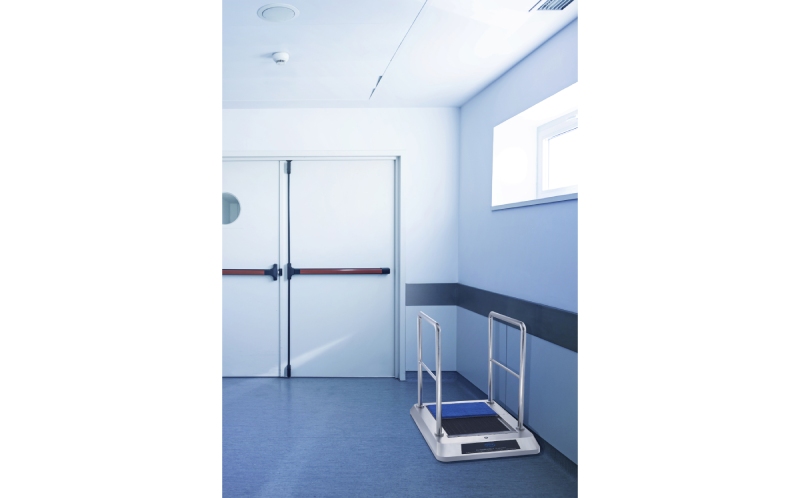How to Effectively Control Ground Contamination in a Research Lab

Cross-contamination brings risks to R&D facilities, as keeping the integrity of the experiment is vital to scientific progress. Identifying common conditions and taking effective control measures will guarantee the validity and reliability of the study results.
1. Typical Contamination Scenarios in the Lab
Cross-contamination happens when samples, equipment, or surfaces in the lab are polluted with foreign substances or microorganisms. It will lead to biased experimental results. For example, sharing equipment without careful cleaning or disinfection can undermine experimental integrity, misleading results, and hamper science. Besides, improper handling or labeling of biological samples and reagents may cause contamination between experiments. In this case, the result can be inaccurate.
2. Risks of Cross-contamination in research laboratories
2.1 Impact on research results and experimental integrity:
Cross-contamination between samples or experiments in a research facility can harm the results of a study, reducing the credibility of the results and damaging the reliability and validity of the results. It can lead to false experimental results, a waste of resources, and a negative effect on scientific progress.
2.2 Safety Risks:
Personnel may expose themselves to the risk of cross-contamination incidents. For example, staff may come into contact with dangerous pathogens, chemicals, biological agents, or infectious substances. If contaminated samples are handled improperly, they can threaten the health and safety of personnel by causing accidents, spills, or exposures.
3. Four Effective Ways of Controlling Cross-Contamination for Labs
By completing a risk assessment and following these four strategies, research facilities can retain the validity and reliability of research results, advance science, and contribute to knowledge.
3.1 Setting strict rules for personnel
It is vital to establish strict rules for personnel safety and health. For example, the lab staff can use personal protective equipment (e.g., lab coats). And they must handle hazardous materials properly. These actions can reduce the risk of exposure and avoid cross-contamination of materials in the labs.
3.2 Use Protective Equipment
Carrying out the measures to clean, maintain, and calibrate laboratory equipment can minimize the risk of inter-experimental cross-contamination. Moreover, specialized equipment (e.g., biosafety cabinets) for specific research applications, and proper labeling and storage of research samples, will further reduce the risk of potential cross-contamination.
3.3 Offer Training and Education for Personnel
It is necessary to provide staff with overall training in safe laboratory practices. They include cleaning and disinfecting contaminated surfaces. In this way, cross-contamination will be prevented. As a result, this will increase awareness and compliance among researchers, laboratory technicians, and support staff.
3.4 Using shoe sole cleaning machines in the lab entrance and exit:
As a good helper for ground cleaning, Glikon’s automatic shoe cleaner machine.
can clean and dry the shoe soles of personnel before they walk into the lab. The dirt, debris, mud, germs, and bacteria are 99.9% prevented from spreading into the lab. It can improve the overall health and hygiene level inside the lab.
4. Why should you use Glikon’s shoe sanitizing machine for a lab?
4.1 Avoid Cross-Contamination:
Laboratories often handle different samples or materials. Each of them requires a specific level of cleanliness. A shoe sanitizer machine helps to prevent cross-contamination because any potential contaminants from external sources are outside the laboratory.
4.2 Maintaining Cleanroom Standards:
In laboratories with dust-free environments, even the tiniest particles can disturb experiments or compromise the integrity of research. Shoe sole cleaners help maintain cleanliness in controlled environments.
4.3 Compliance:
Many regulatory standards and guidelines request specific measures to keep the laboratory environment clean. Using automated boot cleaners proves compliance with these regulations and assures that the laboratory is running safely and responsibly.
4.4 Cost-Effectiveness:
While buying a sole scrubber will result in an initial cost, it will save money in the long run by reducing the need for extensive cleaning protocols or potential damage caused by contaminants entering the lab.
4.5 Employee Health and Comfort:
Clean floors create a healthier and more comfortable work environment for lab personnel. Since the shoe cleaning equipment can remove dirt, debris, and potential contaminants from the shoe bottom, slips falls, and injuries are not likely to happen in the lab.
In a word, preventing cross-contamination requires much effort in the lab. The measures include setting strict rules for personnel, using protective equipment, personnel training, and the use of shoe sole cleaning machines in labs, etc. To create a worry-free and clean environment in the lab, let’s pull together!